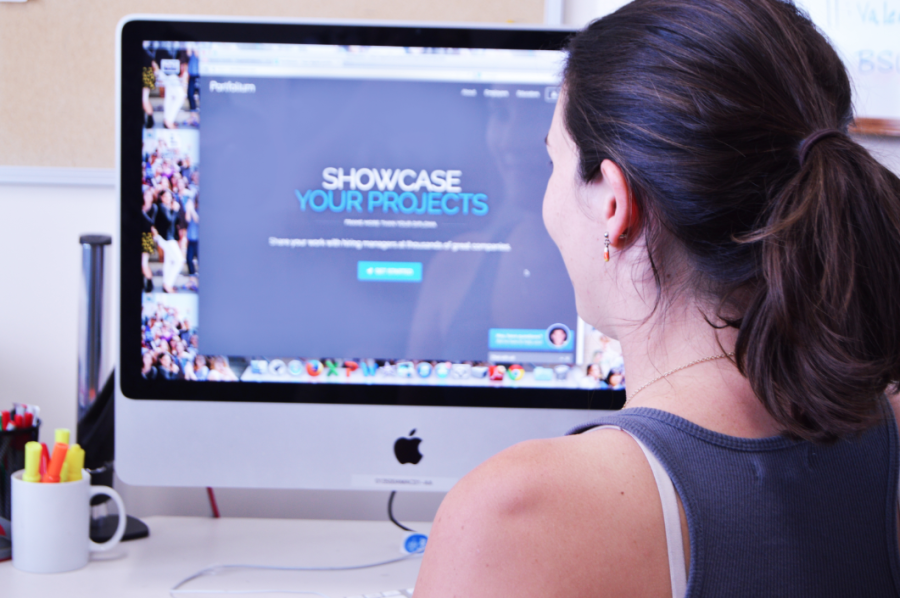By Katlin Sweeney
Editor-in-Chief
The ways that students can catch the eyes of potential employers is constantly evolving, evidenced by the advent of the interactive, digital portfolio.
Portfolium, the new way that students can bring a youthful spark to the traditional resume, was introduced to students in early September. The campus has partnered with the company by providing each student with an account and encouraging them to utilize the portfolio tool for an added visual component when going into job interviews.
Nicknamed by some individuals as a “LinkedIn geared more for students,” Portfolium allows the user to demonstrate their professional and personal interests by actually showcasing the projects that they normally would just mention in a resume.
With the success that Portfolium has enjoyed at other universities in California since its creation last year, the administrators at CSUSM became interested in providing Portfolium as a resource to students. Since its official “introduction” to campus a few weeks ago, the CSUSM Portfolium network already features over 1,000 entries and more than 8,000 students have logged in to begin their portfolio.
“Portfolium will benefit CSUSM as an institution by benefiting the communities we serve,” Vice President of University Advancement, Neal Hoss, said. “With the ability to translate academic work and experiences into the skills and criteria that employers are looking for, we hope our students and alumni will be better equipped to get the job or promotion that will help them advance in their careers.”
According to Vice President Hoss, the administration’s primary goals for Portfolium are to help students build a more detailed, well-rounded portfolio, to connect them to their peers and alumni and to attract more employers to hiring students at CSUSM that meet the qualifications they are looking for.
In addition to this, the portfolio network will give prospective students an opportunity to learn about the campus and student body by viewing CSUSM Portfolium profiles. Eventually, the administration plans to possibly expand its reach to more of the campus community as well.
“At some future point we anticipate that this will be made available to faculty and staff, primarily in an effort to support CSUSM students and alumni who have their digital portfolios on Portfolium,” Hoss said.
Some students may shy away from using Portfolium in its entirety due to the fact that it makes an individual’s projects and work public online. However, there are ways to protect intellectual property from being copied or stolen.
“Our team built Portfolium with the end user in mind. That’s why we made sure each piece of content within a user’s portfolio has its own privacy and visibility settings,” Portfolium CEO, Adam Markowitz, said. “For the sensitive content, a user can set it so that only trusted connections and employers may view. For the portfolio entries showcasing a student’s passion, lifestyle and hobbies, we recommend keeping these public to increase exposure and ‘searchability.’”
Portfolium takes many aspects of student usage into consideration, including the omission of fees to join, and use, the network and no selling or sharing of user content or information.
“Portfolium does not have unrealistic terms of service,” Markowitz said. “They are almost identical to other e-portfolio and social networks, including WordPress, DropBox and LinkedIn.”
In addition to the current features, users can look forward to updates to how portfolios look, which according to Markowitz will be in use within the next few weeks.
Students that are interested in logging into their Portfolium account to learn more about updates and the ways that they can share their experiences can go to https://csusm.portfolium.com/.
“If ‘a picture is worth a thousand words,’ then Portfolium is worth a terabyte,” Hoss said.


